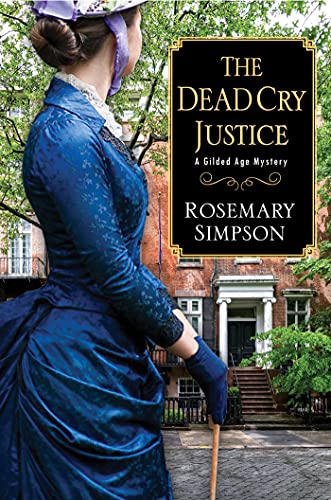The Dead Cry Justice (A Gilded Age Mystery)
As we are reminded by 19th-century photographer Jacob Riis’s zealous documentation of the slums, the plight of destitute children is painful to observe, no more so in the 19th-century than today, and the exploitation of vulnerable girls who are abducted and trafficked into addiction and prosecution may sadly never be eradicated. As the saying goes, “you can get anything you want in New York City.” In The Dead Cry Justice, Simpson’s passion for her subject highlights a particularly brutal and distasteful side of this ‘industry’.
Readers of the series will be familiar with private agents, Prudence MacKenzie, a well-known heiress, and Geoffrey Hunter, an ex-Pinkerton. After finding a young brother and sister hiding in the law school basement, Prudence takes them to her friend, Dr Sloan, at the Friends (Quaker) Refuge. Not only are they filthy and starving, but the girl is also clearly very ill and may not recover. After some early enquiries, Prudence receives an unidentified parcel containing a porcelain doll, which bears a resemblance to the girl. But the children unexpectedly disappear overnight, and Prudence and Geoffrey are left with a search through the deadly streets of the Five Points, leading them to an exclusive cabal catering to the most expensive and depraved tastes in sexual congress with minors.
One of many books featuring female sleuths, this one stands out. Simpson has clearly done copious research. Time and place are well-observed, the narrative is moving and immersive. Characters are true to type, diverse, and carry the racing narrative through to its conclusion. Nellie Bly, Jay Gould’s philanthropic daughter Helen, and Jacob Riis make cameo appearances. For this sixth in a series of standalone Gilded Age mysteries, it should perhaps be noted that details of the girls’ ordeal are very graphic, but it’s a terrific read and noteworthy for its important historical content.










